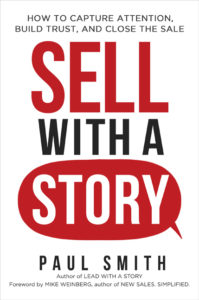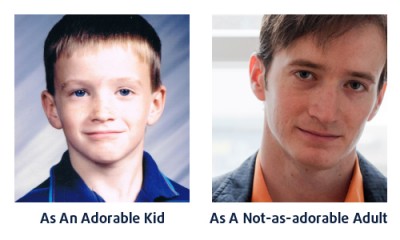Podcast: Play in new window | Download | Embed
Subscribe: RSS
Podcast (parenting-with-a-story-podcast-series): Play in new window | Download | Embed
Subscribe: RSS
Today, Andrew Tarvin describes himself as a humor engineer. What that means is that he’s a speaker, trainer, author, and coach who helps people be more successful at work by using humor. That also helps explain the partly funny, partly self-depreciating subtitles he chose for the pictures of him you see here.
But the story about him below isn’t about humor. It’s about shame and integrity, and how much the first one can make us lose the second one if we’re not careful.
It’s a lot more fun to listen to Drew tell the story himself, which you can do by clicking the play button above. Or you can read the version below from my book, Parenting with a Story.
Andrew grew up in a small midwestern neighborhood. His best friend, Bud, lived in the house catty-corner to his. They played together almost every day. But despite living in the same neighborhood, it became apparent to Andrew that Bud’s family was better off financially than his. His evidence for this? Bud had more toys. A lot more toys. In his bedroom, Bud had a giant bin the size of a garbage can stacked to the brim and overflowing with toys of all kinds. Compared to Andrew’s modest toy box, it was a thing to behold.
At the time, Andrew’s favorite toys were Teenage Mutant Ninja Turtle figures, based on the television show of the same name. And among the many characters, he was most enamored of Leonardo, the leader of the turtles with the jet blue bandanna. So you can imagine Andrew’s disappointment when his eight-year-old brother used a black magic marker to add some artistic flare to Andrew’s Leonardo figure. Even as an adult twenty-five years later, Andrew still describes the incident as having “ruined” it.
One day soon after “the marker incident,” Andrew was playing at Bud’s house. He noticed with now heightened envy Bud’s Ninja Turtle set. Bud had the entire collection: all the main turtles, their adversaries Bebop and Rocksteady, the toy cars they rode in, the works. But what mostly caught Andrew’s attention was his pristine Leonardo figure. He recalls thinking, “He has all this stuff. He’ll never notice if one is missing.” At the end of the day, when Bud wasn’t looking, Andrew dropped Leonardo in his backpack and took it home.
The next day when his brother noticed him playing with it at home, he said, “Wow! How is it so clean now?”
Andrew hadn’t anticipated any questions. That’s when he realized that taking something that doesn’t belong to you soon leads to other bad behavior. Now he was going to have to lie. What he quickly came up with was, “Oh, I found a really good cleaner and I cleaned it up.” It was enough to satisfy an eight-year-old. But now he had a second transgression to feel guilty about.
A few days later, Andrew walked over to Bud’s house to play. But before they got started, Bud’s mom said to him, “Before you boys are allowed to play, we have to find Bud’s Leonardo doll. We haven’t seen it in two or three days.”
“Oh no!” Andrew thought. “He did notice after all. Now what am I going to do?”
All three started the search. As they looked under couches and behind curtains, Andrew’s mind was spinning. “What should I do now? Does she know that I took it and that it’s in my bag there on the floor right now?” At this point he was surely wishing that he’d never taken it in the first place. That’s when an idea occurred to him. If he “found” Leonardo, maybe he wouldn’t get caught for having stolen it. So when nobody was looking, Andrew took it out of his bag and placed it on top of the toy bin. After another minute or two of faux searching, Andrew announced, “Hey Bud, here it is, right on top!” Bud rejoiced in the find and walked away happy to play.
Bud’s mom waited until Bud was out of earshot. Then she looked down at Andrew and asked, “So, you were able to find the doll. That’s good. Do you want me to tell Bud where it really was?”
A series of emotions struck Andrew, one after another, like waves crashing on a beach. The first were guilt and shame. “I took my best friend’s doll!” he thought. It must be difficult enough for anyone, adult or child, to come to terms with having stolen something. But imagine having stolen it from your very best friend in the world.
Then the terror set in. “What if she tells Bud? He might not want to ever be friends with me. Or worse, what if she tells my mom!” He couldn’t imagine a punishment appropriate for this.
“No, I don’t want you to tell him.” Andrew replied in a sheepish yet thoughtful manner. Bud’s mom smiled and let him go play. But for the rest of the visit, Andrew was racked with regret and guilt. “I felt awful the whole time.”
Later, at home, he pulled out his old Leonardo figure to play, hoping the whole ordeal would be behind him now. But life’s not that kind, especially when you’ve wronged someone and then lied to conceal the wrong. His brother noticed the old doll and said, “Hey, why is it all marked up again?”
Now young Andrew had to lie a second time to his brother to cover up the first lie. “I got so used to it, I decided put the marks back,” was what he came up with. And while that wasn’t technically true, there was an important truth in it. He was more comfortable playing with his old Leonardo doll, the one that really belonged to him. Bud’s pristine figure now represented his crime and transgression against his friend. He wanted nothing more to do with that one.
But even then it wasn’t really over. He couldn’t really be sure that Bud’s mom wouldn’t eventually tell. And that made the shame and guilt linger, as he wondered each day if and when the other shoe would drop. Or in this case, the other turtle. The remorse and anguish eventually faded. But not without leaving a lasting impression.
Bud’s mom never did tell Bud or Andrew’s mother. Andrew believes she could tell how much he was suffering in his own guilt. It might have actually been easier if she had told. Then maybe he could have had some degree of closure on the matter. What has lasted, instead, is the brutal lesson of shame and guilt that accompanies taking something that doesn’t belong to you. It’s not a feeling Andrew ever wants to relive.
As with all of these stories, I encourage you to share this with your kids, and then have a discussion about it. Here are some questions to get you started.
- How would you feel if your best friend stole something of yours?
- How do you think you would feel if you got caught stealing something from a friend, like Andrew did?
- How would you feel even if you didn’t get caught?
- Have you ever heard the saying, “Tell the truth and you won’t have to remember all the lies you told”? What does that mean to you?
- Can you think of a situation where it might be appropriate to take something that doesn’t belong to you?
[You can find this and over 100 other character-building stories in my book, Parenting with a Story.]
—
 Paul Smith is one of the world’s leading experts on business storytelling. He’s a keynote speaker, storytelling coach, and bestselling author of the books Lead with a Story, Parenting with a Story, and Sell with a Story.
Paul Smith is one of the world’s leading experts on business storytelling. He’s a keynote speaker, storytelling coach, and bestselling author of the books Lead with a Story, Parenting with a Story, and Sell with a Story.


 Connect with him via email here.
Connect with him via email here.
Follow him on Facebook, LinkedIn, Twitter, and Instagram.
Sign up for his newsletter here to get one new story a week delivered to your inbox.


